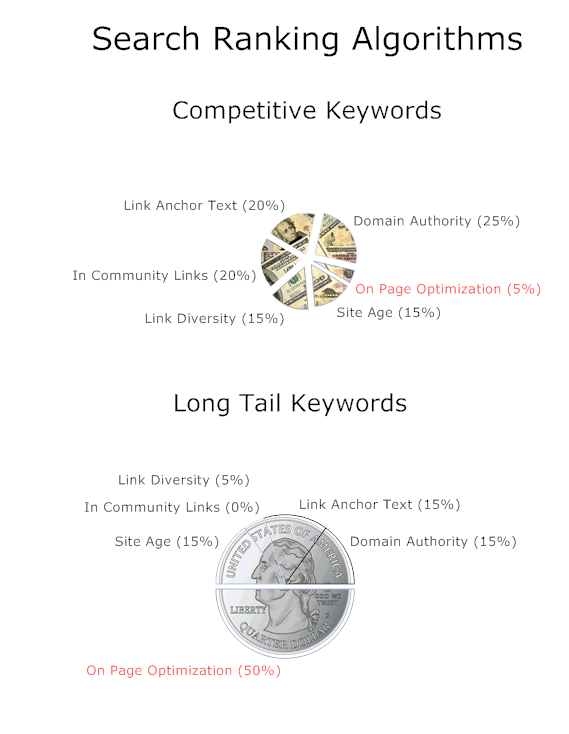Twitter Etiquette Boot Camp for SEOs (and other social media-handicapped professionals)
Marjorie Steele | Monday, October 25, 2010 |



How to Choose the Perfect Keywords for Your Website
Marjorie Steele | Sunday, October 17, 2010 | Labels: keyword research

4 Simple Social Media Giveaway Ideas (that won't have you tearing your hair out)
Marjorie Steele | Tuesday, October 5, 2010 |
Organic SERPs vs. Sponsored Ads: A Consumer's Perspective
Marjorie Steele | Sunday, September 26, 2010 |


 Take a careful look at the organic listings. The brand itself occupies the first two results, with a slew of positive reviews which follow below. Ironically, the last listing praises Blu for its "great looking website", which other sellers seem to have taken for granted.
Take a careful look at the organic listings. The brand itself occupies the first two results, with a slew of positive reviews which follow below. Ironically, the last listing praises Blu for its "great looking website", which other sellers seem to have taken for granted.SEO Article Marketing Special: Give Your Brand a Kick in the Pants
Marjorie Steele | Tuesday, September 21, 2010 |
Writing About Us Pages: Not Just Another Space to Sell
Marjorie Steele | Thursday, September 16, 2010 |

Why On-Page SEO Content? Boosting Traffic for Longtail Keywords
Marjorie Steele | Friday, September 10, 2010 |
 According to SEOBook.com's research, on-page optimization only has a 5% influence in gaining rankings for competitive keywords, while it has a whopping 50% influence on rankings for longtail keywords. These figures seem very low, and from my experience, on-page optimization tends to carry more weight than 5 and 50%, particularly for smaller niche industries and local businesses (i.e. sites with lower competition). Still, these figures demonstrate an important point about marketing sites for longtail keywords: it requires on-page content.
According to SEOBook.com's research, on-page optimization only has a 5% influence in gaining rankings for competitive keywords, while it has a whopping 50% influence on rankings for longtail keywords. These figures seem very low, and from my experience, on-page optimization tends to carry more weight than 5 and 50%, particularly for smaller niche industries and local businesses (i.e. sites with lower competition). Still, these figures demonstrate an important point about marketing sites for longtail keywords: it requires on-page content.Lead Generation: Give Away Your Best Ideas for Free
Marjorie Steele | Wednesday, September 1, 2010 |
Original thread:
I wrote a 2800 word article on How to Market Your Automotive Business Online that I think folks here would like. Let me know - edits or feedback on it would be appreciated! - D. Anonymous
Reply:
Loved the article, Dave. A very thorough summary of solid SEO
strategies. I can't emphasize the importance of thorough keyword
research and analysis enough. Finding high volume keywords isn't
enough; those keywords need to be 100% relevant to the web page (or blog post, if you use a blogging strategy like the one I manage here:
www.keepthecar.com). Increasing traffic is worthless if your visitors
are looking for something other than what you're selling.
Also, segmenting services into multiple sub-pages is a great way to
gather traffic for specific niche services, like "corvette repair" or
"computer automotive diagnostics".
If you're feeling confused, my web marketing
blog (www.creativewebbusiness.blogspot.com) has plenty of down-to-earth SEO tips for DIY business owners. - M. Steele
How to Write SEO Page Titles (and Why They're Important)
Marjorie Steele | Monday, August 23, 2010 |

Why You Shouldn't Outsource SEO Copywriting to India
Marjorie Steele | Thursday, July 29, 2010 | Labels: content, seo copywriting
SEO 103: Link Building Terminology & Basic Concepts
Marjorie Steele | Friday, July 23, 2010 | Labels: link building, SEO Basics

Small Business Success with SEO: Achieving Google's Page One in a Month!
Marjorie Steele | Monday, July 12, 2010 | Labels: case study, SEO Basics
How Not to be Heard: 5 Marketing Lessons from Hiring a New Programmer
Marjorie Steele | Friday, June 25, 2010 |








